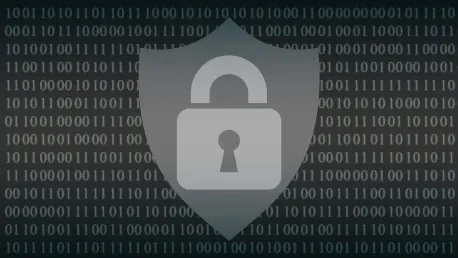The recent cybersecurity breach at Change Healthcare, a payment processing company, serves as a stark reminder of the pervasive threats organizations face in the digital age. More than 100 million Americans had their personal information exposed due to this incident, causing significant operational disruptions for numerous healthcare providers. The American Hospital Association reported that 94% of hospitals experienced financial repercussions, with 74% facing severe operational disruptions, affecting both patient care and revenue streams. This massive data breach underscores the critical need for Chief Financial Officers (CFOs) to integrate robust cybersecurity measures into their financial and operational strategies to safeguard their organizations’ stability.
The Financial Impact of Cybersecurity Breaches
The immediate financial impact on Change Healthcare and its parent company, UnitedHealth, was substantial. The $22 million ransom payment was just a small part of the extensive costs anticipated, which are expected to reach billions as the company manages response efforts and regulatory investigations. This scenario highlights essential lessons for CFOs, emphasizing the necessity of proactive and comprehensive cybersecurity strategies to protect their organizations’ financial and operational stability. Understanding the intricate digital dependencies within an organization’s revenue cycle and promptly addressing vulnerabilities are crucial takeaways from this incident. Cybersecurity should move beyond being an elective “box-checking” task and become an integral part of financial strategy for maintaining operational efficiency, protecting revenue streams, and ensuring the financial health of the organization.
CFOs must prioritize cybersecurity measures to avoid the severe financial and reputational damages associated with breaches. The Change Healthcare breach illustrated vulnerabilities that can disrupt operations, leading to significant financial losses and operational inefficiencies. Investing in strong cyber defenses not only preserves revenue streams but also protects the overall financial stability of the organization. This proactive approach will enable organizations to better withstand cyber threats and maintain resilience in an increasingly complex digital landscape.
Evolving Responsibilities of CFOs
Furthermore, CFOs must recognize their evolving responsibilities that extend beyond traditional financial oversight. As strategic risk managers, they need to comprehend the business dependencies of cybersecurity, shifting from relegating cybersecurity to the IT department where policies and controls are mainly implemented to satisfy regulatory requirements or meet cyber insurance stipulations. Instead, cybersecurity must be embedded within strategic planning processes to protect and ensure the uninterrupted operations of the organization’s financial interests. This approach necessitates a shift in perspective, viewing cybersecurity as a core component of financial strategy rather than a separate, technical concern.
Enhanced collaboration across the C-Suite is crucial for effective cybersecurity management. CFOs, CEOs, CIOs, and CISOs need to work together cohesively to develop cybersecurity strategies that align with business resilience goals. Each executive brings a unique perspective—whether it’s financial oversight, strategic direction, technological management, or risk-focused security—that must converge into a unified, cross-functional plan. Such collaboration enables the development of comprehensive protocols for vendor management, vulnerability assessments, business continuity, disaster recovery, and incident response, ensuring rapid response to breaches and minimizing operational and financial impacts. This collective effort not only enhances cybersecurity posture but also integrates risk management into the broader organizational strategy, promoting resilience and stability.
Differentiating IT and Cybersecurity Roles
CFOs also need to differentiate between the roles of IT and cybersecurity within their organizations. While CIOs may prioritize the swift implementation of new technologies to drive operational efficiency, CISOs focus on managing the risks associated with these technologies. Therefore, CFOs should understand these differing priorities and integrate them to create a balanced cybersecurity strategy that aligns with broader organizational objectives. Leveraging both the CIO’s efficiency-driven mindset and the CISO’s risk management approach ensures a well-rounded strategy that safeguards the organization’s financial and operational interests effectively.
Beyond understanding internal systems, CFOs must also be aware of their organization’s role within the customer supply chain. One key principle to grasp is segmentation, which helps limit the scope and potential damage of cyberattacks by isolating systems and networks. By separating different functions and departments, CFOs can ensure that a breach in one segment does not compromise the entire organization. Additionally, CFOs should assess how their cybersecurity practices—or lack thereof—could create risks for customers. Proper vetting of vendors and suppliers is essential to prevent inadequacies that might compromise both internal and customer-facing operations, providing a more secure operational environment overall.
Developing Contingency Plans and Avoiding Single Points of Failure
To fortify business resilience, CFOs should develop contingency plans to ensure business processes continue even during technology outages. This involves preparing for scenarios where operations must function in a non-technical environment. Equally important is the need to avoid single points of failure, such as an over-reliance on a single vendor for critical operations. Diversifying vendors and having backups in place can enhance both risk management and overall business resilience, despite potential additional costs. These measures ensure that organizations are prepared for technology disruptions, reducing the impact on critical operations and financial stability.
Given that vendor risks are as crucial as securing internal systems, effective vendor management is an essential component of a broader business resilience strategy. The Change Healthcare breach exposed vulnerabilities associated with third-party vendors, highlighting the need for stringent vetting and continuous monitoring of vendor cybersecurity practices. Integrating comprehensive frameworks and processes to handle cyber risks, operational disruptions, and financial resilience is necessary to protect against cascading threats. A proactive vendor management strategy enables organizations to mitigate risks associated with third-party services, ensuring continuity and protecting against potential breaches.
Independent Assessments and Proactive Measures
The recent cybersecurity breach at Change Healthcare, a payment processing company, serves as a stark reminder of the pervasive threats organizations face in the digital age. Over 100 million Americans had their personal information exposed due to this incident, leading to significant disruptions for numerous healthcare providers. According to the American Hospital Association, 94% of hospitals experienced financial repercussions, with 74% facing severe operational disruptions. These issues impacted both patient care and revenue streams.
This massive data breach highlights the crucial need for Chief Financial Officers (CFOs) to incorporate strong cybersecurity measures into their financial and operational strategies. It’s evident that the stability and security of their organizations rely heavily on robust data protection protocols. CFOs must be proactive in fortifying their defenses against such cyber threats to avoid operational interruptions and financial losses. By prioritizing cybersecurity, they can better safeguard the sensitive information and ensure the continuous, efficient function of their healthcare systems, ensuring patient trust and organizational resilience.









